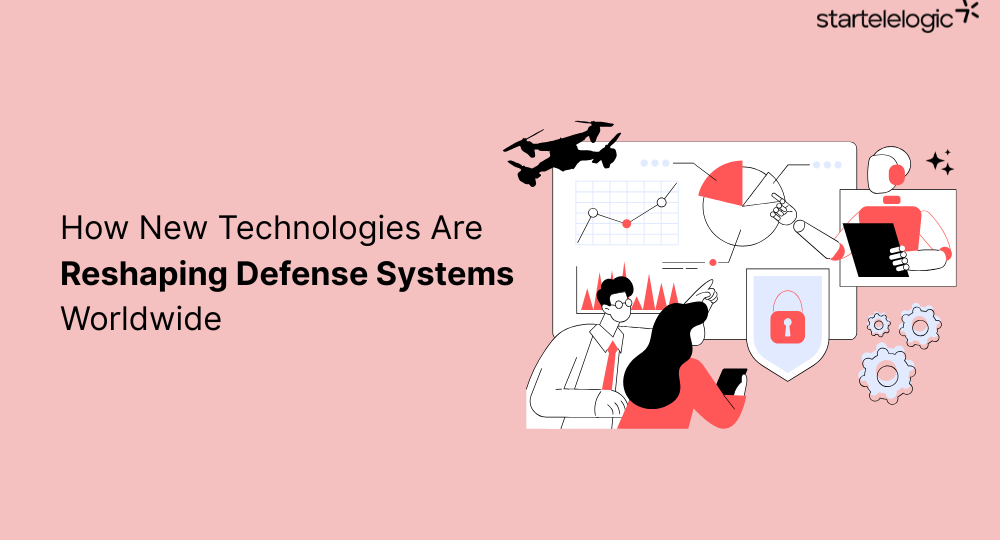Global military forces are changing the way they operate, focusing more on technology than ever before. In 2023, countries around the world spent a total of $2.44 trillion on defense — the highest amount ever recorded, according to the Stockholm International Peace Research Institute (SIPRI). A large part of this spending is now going toward advanced technologies like artificial intelligence (AI), cybersecurity, and autonomous systems.
This trend clearly shows that armies are moving away from traditional weapons and tactics. Instead, they are building smarter, faster, and more high-tech defense systems to face modern threats.
Importantly, this shift is not just about new equipment — it’s also about changing military strategies, improving decision-making speed, and preparing for future warfare in both physical and digital spaces.
Military Modernization: A Global Imperative
Today’s military forces face evolving threats that demand rapid adaptation. From cyber attacks to drone warfare, nations are increasingly recognizing the need for military modernization to maintain national security.
As a result, governments are integrating digital command systems, real-time intelligence tools, and network-centric operations into their defense infrastructure. For example, countries like the United States, China, and India are making significant investments in next-generation technologies to future-proof their capabilities.
To illustrate, the U.S. Department of Defense allocated over $130 billion in 2024 alone for research and development — much of it directed toward these modernization efforts.
Advanced Weapon Systems: Precision and Power
Another clear indicator of progress is the deployment of advanced weapon systems. Hypersonic missiles, laser-guided munitions, and directed energy weapons are no longer futuristic concepts — they are already in development or in use.
These weapons offer greater accuracy, longer range, and enhanced lethality, while significantly reducing collateral damage. For instance, Russia’s Avangard hypersonic glide vehicle and the U.S. Navy’s Laser Weapon System (LaWS) demonstrate just how far offensive and defensive technologies have come.
Consequently, such innovations are not only transforming battlefield tactics but also reshaping global power dynamics.
AI in Defense: Smarter, Faster, More Efficient
Artificial Intelligence is playing a central role in modern warfare. From predictive maintenance of military equipment to autonomous surveillance and decision support, AI helps defense forces respond faster and more accurately to emerging threats.
Furthermore, AI-powered drones and robotic systems can now conduct reconnaissance, target identification, and even combat missions with minimal human input. The Pentagon’s Project Maven, which uses AI to analyze drone footage, shows how deeply integrated machine learning has become in military intelligence.
In short, AI in defense is making operations more efficient, precise, and less dependent on human judgment alone.
Cybersecurity in Military: A Digital Frontline
As defense systems become increasingly digital and interconnected, cybersecurity has emerged as a critical line of defense. Cyber attacks can now cripple communication networks, disable weapon systems, and compromise confidential information.
In fact, in 2022 alone, NATO reported over 4,000 daily cyber incidents targeting defense systems. To counter this, countries are establishing specialized cyber commands and developing resilient digital infrastructure.
Moreover, technologies like blockchain, quantum encryption, and AI-driven threat detection are being integrated to protect sensitive military data. In essence, cybersecurity in military operations is now just as vital as physical defense.
Autonomous Defense Systems: The Rise of Self-Directed Warfare
One of the most transformative developments in modern defense is the rise of autonomous defense systems. These include unmanned aerial vehicles (UAVs), robotic ground vehicles, and autonomous naval drones — all capable of operating without direct human control.
For example, the Israeli Harpy and the U.S. MQ-9 Reaper drones can locate, track, and neutralize targets with little to no manual input.
Although these systems raise ethical and legal concerns, they offer major advantages in terms of precision, speed, and risk reduction. Therefore, more and more militaries are embracing this shift toward autonomous platforms.
Conclusion
The global defense landscape is undergoing a profound transformation, led by Defense Technology Innovations. From military modernization and advanced weapon systems to AI in defense and cybersecurity, today’s armed forces are evolving quickly to meet 21st-century threats.
As autonomous defense systems continue to develop, the future of warfare will rely less on human soldiers and more on intelligent machines, algorithms, and real-time data.
Ultimately, in an age defined by rapid technological change, maintaining a strategic edge requires not just innovation — but adaptation and foresight.
Frequently Asked Questions (FAQs)
1. What is meant by Defense Technology Innovations?
Defense Technology Innovations refer to new and advanced technologies developed to improve national defense systems. This includes AI, autonomous weapons, cybersecurity tools, drones, and smart weapons designed to enhance military efficiency, safety, and power.
2. How is AI being used in defense systems?
AI is used in defense for tasks like surveillance, threat detection, data analysis, and autonomous vehicle control. It helps militaries make faster and more accurate decisions during missions and improves security operations.
3. What are advanced weapon systems?
Advanced weapon systems are high-tech weapons such as hypersonic missiles, laser-based weapons, and precision-guided munitions. These systems are designed to strike faster, farther, and more accurately than traditional weapons.
4. Why is cybersecurity important for the military?
Military operations rely on secure communication and data systems. Cybersecurity protects these systems from hacking, sabotage, and digital spying, which can otherwise lead to loss of control or confidential information.
5. What are autonomous defense systems?
These are machines or platforms like drones, robotic vehicles, or unmanned submarines that can operate without direct human control. They’re used for surveillance, strike missions, and logistics in risky or remote environments.
6. Which countries are leading in defense technology?
Countries like the United States, China, Russia, Israel, and India are investing heavily in modern defense technologies. The U.S. leads in AI and cyber defense, while countries like Israel are pioneers in drone and autonomous tech.




